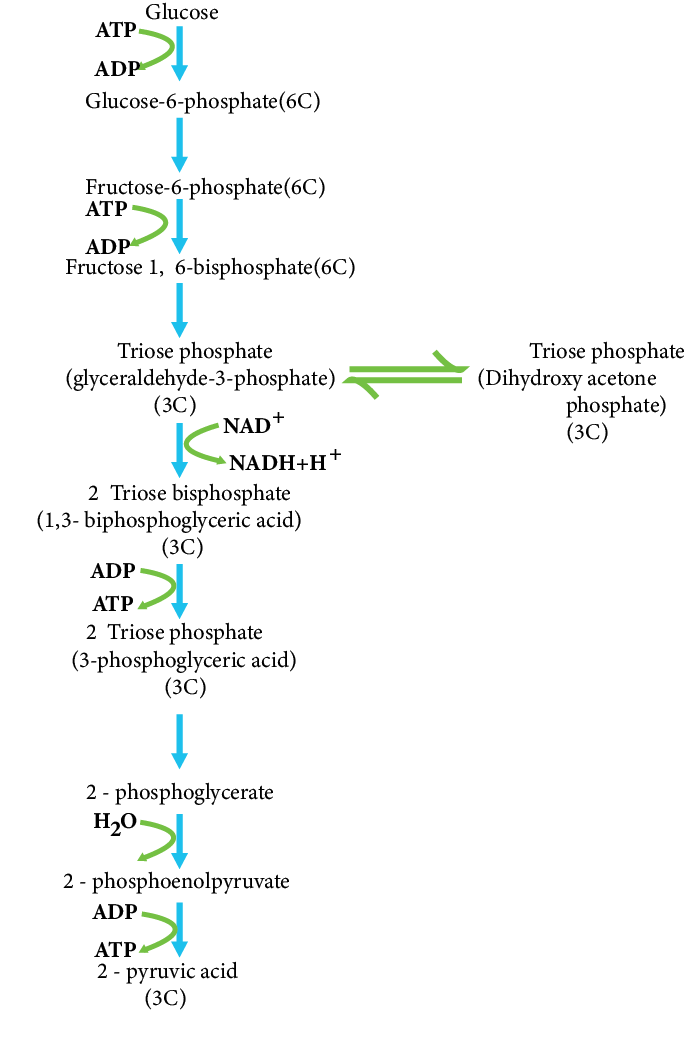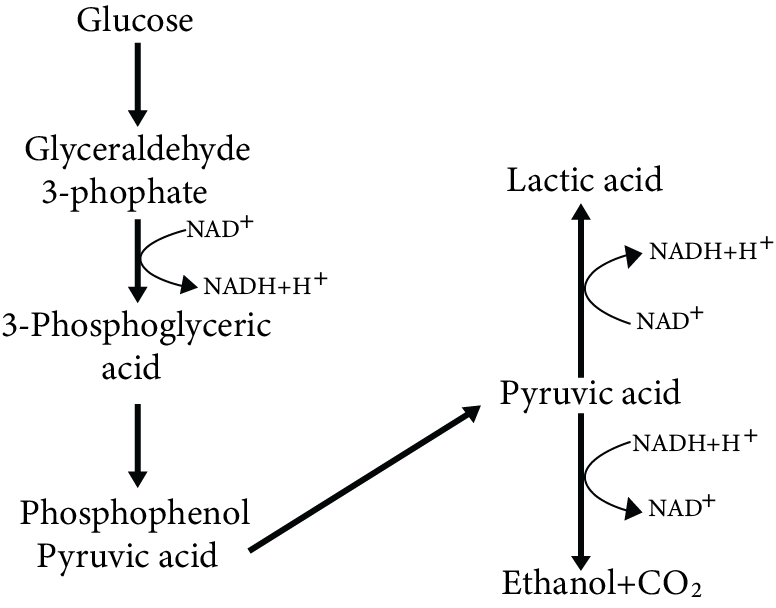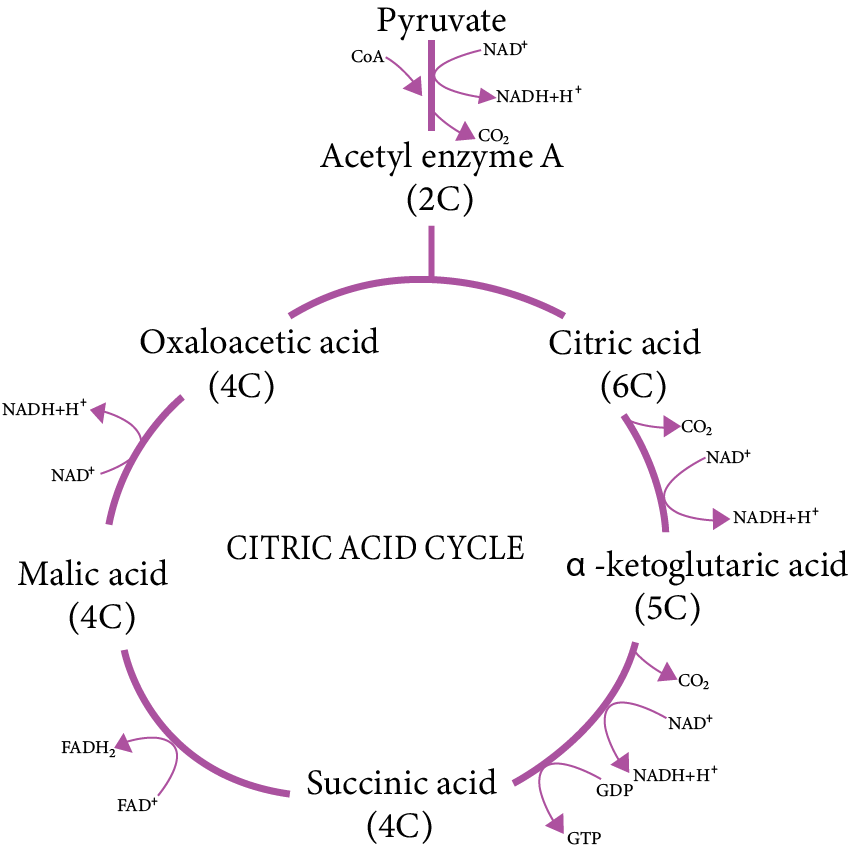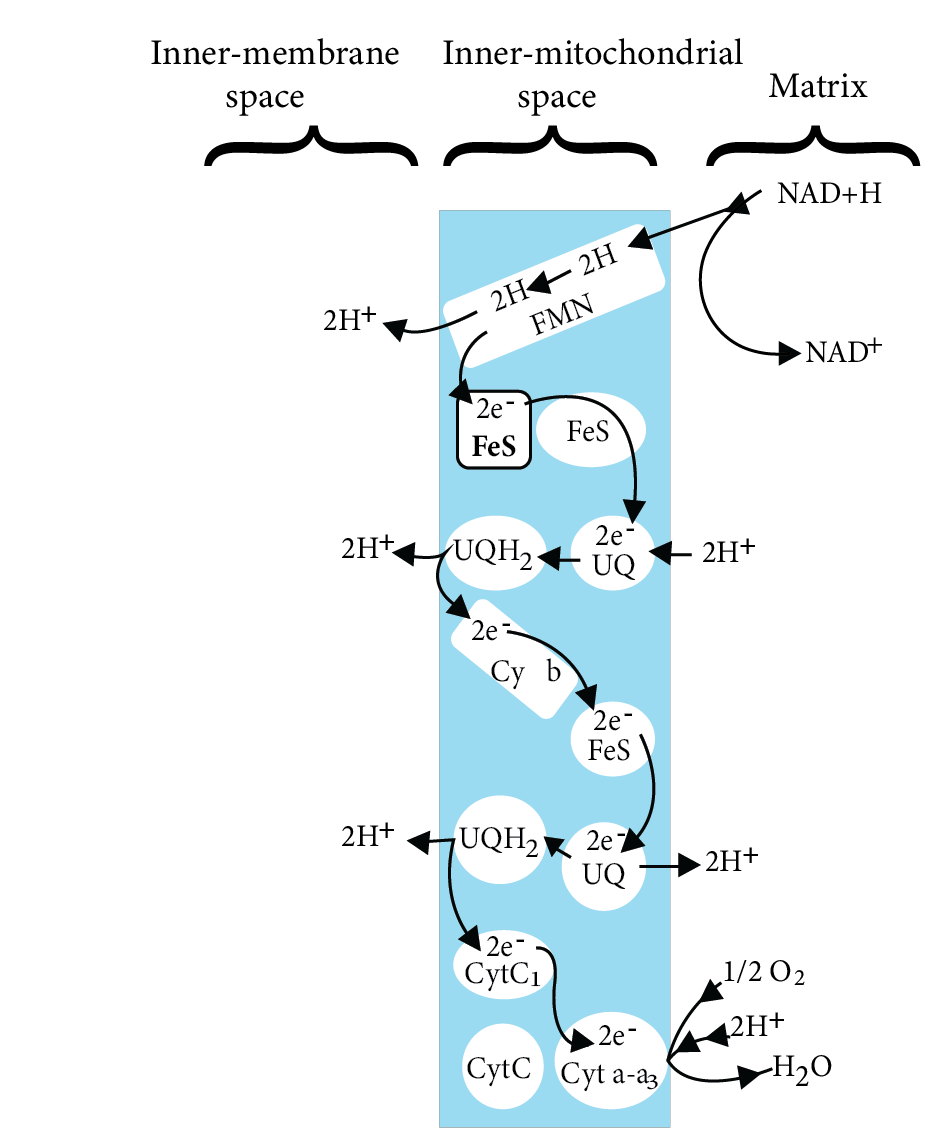Respiration in Plants Revision Notes Free PDF for Excellent NEET Preparation and Scores
Every organism has to respire and prepare the energy for continuing the various life processes. For this, they will need a respiratory substrate and oxygen. Even plants do the same to generate energy and continue burning glucose to supply that energy for various physiological processes. Respiration is continued in every cell of plants. The chapter Respiration in Plants explains this process elaborately with proper steps and chemical reactions.
To understand the concepts of this chapter easily, refer to the Respiration in Plants Class 11 notes prepared by the experts. These notes are designed to offer an easier version of the chapter’s fundamental concepts to the NEET aspirants. These notes can be used to revise the chapter and recall what one has studied before an exam easily.
Note: 👉Get a Head Start on Your Medical Career with the NEET Rank and College Predictor 2024.
NEET Biology Revision Notes -Chapter Pages
NEET Biology Chapter-wise Revision Notes | |
Respiration in Plants Notes | |
Access NEET Revision Notes Biology Respiration in Plants
Introduction:
Respiration is a catabolic energy-releasing, enzymatically monitored process that involves oxidative breakdown of food materials inside living cells in a step-by-step manner.
The chemical equation for respiration in aerobic organisms is given below
$\mathrm{C}_{6} \mathrm{H}_{12} \mathrm{O}_{6}+6 \mathrm{O}_{2} \Rightarrow 6 \mathrm{CO}_{2}+6 \mathrm{H}_{2} \mathrm{O}$
Energy is required by living organisms for all activities such as absorption, movement, reproduction, and even breathing. The energy required for the process is gained from the oxidation of food.
Cellular respiration is the process by which food materials are broken down inside the cell to generate energy for ATP synthesis.
Breaking down complex molecules takes place to produce energy in the cytoplasm and in the mitochondria.
Breaking down the C-C bond of complex compounds through oxidation within the cells leading to the release of energy is called respiration. The compounds that are oxidised are referred to as respiratory substrates.
The energy produced during oxidation is not directly used, but rather used in the ATP synthesis, which is then broken down when energy is needed. As a result, ATP is known as the cell's energy currency.
Respiration in Plants:
The activity of respiration necessitates the presence of oxygen. Stomata, lenticels, and root hairs in plants absorb oxygen.
Plants can survive without respiratory organs since each plant part is responsible for its own gas exchange.
Plants do not have high gas exchange requirements. The distance that gases must travel in the large plant is short.
Oxygen is released from the leaves during photosynthesis and diffuses to other parts of the plant.
During the respiration process, oxygen is used, whereas carbon dioxide, water, and energy molecules as ATPs are released.
Respiratory Quotient:
The Respiratory Quotient (RQ) is the time-dependent ratio of the amount of carbon dioxide generated to the amount of oxygen consumed during respiration. The RQ value for carbohydrates is equal to one whereas, for proteins or peptones, it is less than 1.
Types of Respiration process:

Types of Respiration Processes
Respiration process is of two kinds, Aerobic or Anaerobic.
Aerobic respiration is the process in which food molecules are broken down in the presence of oxygen.
However, in an anaerobic respiration process, degradation of food molecules occurs in the absence of oxygen.
Aerobic respiration is a systematic catabolic process controlled by enzymes that completely oxidise organic food molecules into carbon dioxide and water, with oxygen functioning as a terminal oxidant.
However, in anaerobic conditions, glucose is partially oxidised to form carbon dioxide and ethanol.
Whether it is aerobic or anaerobic respiration, all living organisms maintain the enzymatic machinery needed to partially oxidise glucose in the absence of oxygen. This process of converting glucose to pyruvic acid is known as glycolysis.
Glycolysis:

Process of Glycolysis
Gustav Embden, Otto Meyerhof, and J. Parnas proposed the glycolysis scheme. It is also known as an EMP (Embden–Meyerhof–Parnas Pathway).
Glycolysis is the incomplete oxidation of glucose or other hexose sugars into two pyruvic acid molecules via a sequence of enzyme-mediated reactions that produce some ATP and NADH2. It is found in the cytoplasm.
Glucose is obtained from sucrose or storage carbohydrates in plants. Invertase, an enzyme, converts sucrose into glucose and fructose.
Glycolysis begins with glucose phosphorylation in the presence of the enzyme hexokinase, which produces glucose-6-phosphate. In this process, one ATP molecule is used.
The enzyme called phosphohexose isomerase catalyses the conversion of glucose-6-phosphate to fructose-6-phosphate in the following steps.
By using another molecule of ATP and in the presence of the phosphofructokinase enzyme, fructose-6-phosphate forms fructose-1-6 bisphosphate.
Fructose-1-6 bisphosphate is converted into glyceraldehyde-3-phosphate.
During the double phosphorylation of glucose to fructose 1,6 bisphosphate, two molecules of ATP are used in glycolysis.
When glyceraldehyde-3-phosphate is oxidised to 1,3-bisphosphoglycerate, two NADPH2 molecules are formed.
Because each NADH is equivalent to 3 ATP, the net gain from glycolysis is 8 ATP.
Pyruvic acid is the primary product of glycolysis; the extent to which it is broken down depends on the needs of the cell.
Fermentation:

Types of Fermentation Pathways Chosen by Pyruvic Acid
When oxygen is limited for aerobic respiration in animal cells, such as muscles during exercise, pyruvic acid is modified to lactic acid by the lactate dehydrogenase enzyme due to reduction by NADH2.

Conversion of Pyruvic Acid into Lactic Acid
Pyruvic acid is transformed to ethanol and carbon dioxide during yeast fermentation. This reaction is catalysed by two enzymes pyruvate decarboxylase and alcohol dehydrogenase.
Both lactic acid fermentation and alcoholic fermentation produce very little amount of energy.
If the concentration of alcohol exceeds 13%, yeasts harm themselves to death.
Aerobic respiration:
Pyruvate, the end product of glycolysis, is transferred from the cytoplasm into the mitochondria for further digestion.
Carbon dioxide and NADH are produced by oxidising pyruvate to acetyl-CoA. Multiple Coenzymes, including NAD+, are required for the reaction catalysed by pyruvate dehydrogenase.
$\text { Pyruvic acid }+\mathrm{CoA}+\mathrm{NAD}^{+} {\longrightarrow} \text { Acetyl CoA }+\mathrm{CO}_{2}+\mathrm{NADH}+\mathrm{H}^{+}$
The Acetyl-CoA joins the Tricarboxylic Acid (TCA) Cycle or Krebs cycle, which is a cyclic pathway.
TCA cycle/ Tricarboxylic Acid Cycle/ Krebs cycle:

Citric Acid Cycle/ Tricarboxylic Acid (TCA)Cycle/ Krebs Cycle
Hans Krebs discovered the TCA cycle in 1940, thus, also known as Krebs cycle.
Because the primary product of this process is citric acid, this cycle is known as the Citric Acid cycle.
This cycle contains three acids, making it a tricarboxylic acid (TCA), and thus the cycle is also known as the tricarboxylic acid cycle.
The respiratory molecule in the TCA cycle as a substrate is acetyl coenzyme-A, and the acceptor compound is OxaloAcetic acid (OAA)which is a four-carbon compound.
In the presence of the enzyme citrate synthase, acetyl CoA combines with OAA (Oxaloacetic acid) and water to produce citric acid.
Dehydrogenation causes the transformation of isocitric acid, which results in the production of oxaloacetic acid. NAD+ is reduced in this process, resulting in NAD and H+.
The oxalosuccinic acid is then decarboxylated, resulting in the generation of alpha-ketoglutaric acid, a five-carbon compound.
The step of decarboxylation will then lead to the production of the four-carbon compound known as succinyl CoA, leading to the reduction of NAD+ to produce NAD and H+.
CoA is required for this reaction.
Due to the absence of CoA from the succinyl, GTP and the succinic acid will be created, and the GTP created will then be moved to one of the ADP phosphates, resulting in ATP formation.
Succinic acid will be converted into fumaric acid, a four-carbon compound, during the dehydrogenation process, while FAD will be reduced, resulting in FADH2.
Following the addition of a water molecule, the next step includes the malic acid formation from fumaric acid.
Finally, malic acid will be converted into oxaloacetic acid, and NAD+ will be reduced, resulting in NADH+.
The formed oxaloacetic acid will now incorporate with the acetyl CoA, resulting in the beginning of a new cycle.
The citric acid cycle will aid in the oxidation of acetyl Co-A, resulting in the restocking of oxaloacetic acid as well as the restoration of NAD+ and FAD+ from NADH+ and FADH2, respectively.
Because glycolysis requires two molecules of pyruvic acid, only one glucose molecule is required, as well as the creation of two molecules of acetyl CoA.
During the aerobic oxidation process, pyruvic acid and two NADH+ molecules combine to form acetyl CoA. Thus, in the case of one citric acid cycle, three NADH+ molecules, one FADH2 molecule, and one ATP molecule will be formed.
During anaerobic oxidation, each NADH+ molecule produces three ATP molecules, while each FADH2 molecule produces two ATP molecules; this process is known as oxidative phosphorylation.
As a result, the net energy gain in the citric acid cycle is 12 ATP. As a result, when one glucose molecule undergoes aerobic respiration, a net gain of 38 ATP molecules occurs.
In the case of several eukaryotic cells, 2 ATP molecules will be required for the transfer of NADH formed during glycolysis into the mitochondria, where it will be used to perform oxidation.
As a result, the net energy gain is now 36 molecules of ATP. This will result in the release of 45 percent of the energy preserved in the 38 molecules of ATP for oxidising one molecule of glucose, with the remainder destroyed as heat during aerobic respiration.
Electron Transport Chain

Electron Transport Chain
Electron Transport Chain (ETC) or mitochondrial respiratory chain, refers to the metabolic pathway by which electrons move from one carrier to another within the inner mitochondrial membrane.
NADH dehydrogenase oxidises electrons from NADH produced during the citric acid cycle, and electrons are forwarded to ubiquinone situated within the inner membrane. Ubiquinone also gets electrons from FADH2, which are then moved to cytochrome c through the cytochrome bc1 complex.
When electrons travel from one carrier to another along an electron transport chain, they generate ATP from ADP and inorganic phosphate. The number of ATP molecules generated can be decided by the electron donor.
One molecule of NADH oxidised produces three molecules of ATP, while one molecule oxidised produces two ATP molecules.
Oxidative phosphorylation | Photophosphorylation |
It occurs in the respiration process. | It occurs in photosynthesis. |
The energy of oxidation-reduction is used for the production of the proton gradient required for phosphorylation. | Light energy is the key to creating the proton gradient for phosphorylation. |
The energy that is released during ETC is used to produce ATP with the assistance of ATP synthase, which is composed of two major components, F1 and F0.
F1 is a protein complex found in the peripheral membrane that contains a site for the production of ATP from ADP and inorganic phosphate. F0 is an integral membrane protein that creates a proton channel.
For every ATP produced, two H+ molecules pass through F0 from the intermembranous space to the matrix, following the electrochemical proton gradient.
Fermentation | Aerobic Respiration |
It accounts for the incomplete oxidation of glucose. | It accounts for the complete oxidation of glucose. |
In fermentation, there is a net gain of only two molecules of ATP. | In aerobic respiration, there is comparatively more net gain of ATP. |
NADH is oxidised to NAD+ very slowly. | NADH is oxidised to NAD+ very fast. |
Respiratory Balance Sheet:
Based on the mentioned assumptions, the net gain of ATP for each glucose molecule oxidised can be calculated.
Respiration is a serial and systematic process. The steps in the pathway are glycolysis --> TCA cycle --> ETS pathway.
Every NADH molecule synthesised during glycolysis is relocated to the mitochondria for the process of oxidative phosphorylation and ATP production.
Respiration is a distinct pathway, and intermediates produced along the way are never used to synthesise another compound.
The only respiratory substrate used for ATP generation is glucose. Protein and fat, for example, do not enter the pathway at any point.
The complete combustion of glucose occurs during aerobic respiration. During the electron transport system of aerobic respiration, each NADH molecule generates three ATP molecules, while each FADH2 molecule generates two ATP molecules. Prokaryotes and eukaryotes create different amounts of ATP.
ATP from Glucose
One glucose molecule undergoing complete oxidation provides:
$\begin{array}{lc}\text { From glycolysis } & 6-8 \mathrm{ATP} \\\text { From 2 pyruvate } & 6 \mathrm{ATP} \\\text { From 2 acetyl CoA } & 24 \mathrm{ATP}\end{array}$
So in total it will be 36 - 38 ATP
Overall ATP Production for one glucose
$\mathrm{C}_{6} \mathrm{H}_{12} \mathrm{O}_{6}+6 \mathrm{O}_{2}+(36-38) \mathrm{ADP}+(36-38) \mathrm{P}_{\mathrm{i}} \longrightarrow 6 \mathrm{CO}_{2}+6 \mathrm{H}_{2} \mathrm{O}+(36-38)$ ATP
Amphibolic Pathway
The preferred substrate for respiration is glucose. Before it can be used for respiration, all carbohydrates are generally turned into glucose.
Fats must be decomposed into glycerol and fatty acid, which must then be broken down further and transformed into Acetyl CoA before entering the respiratory pathway.
Proteins are further degraded into amino acids, which then enter the Krebs cycle.
Catabolism refers to the process of breaking down within a living organism, while anabolism refers to the process of synthesis. Respiration is thus an Amphibolic pathway.
Key points to Remember:
Plants, unlike animals, lack special breathing and gas exchange systems.
Gaseous exchange occurs via diffusion through stomata and lenticels. Most of the living cells of a plant have exposed surfaces to the air.
Cellular respiration refers to the breaking of C-C bonds in complex organic compounds by oxidation cells, which results in the release of a large amount of energy.
The preferred substrate for respiration is glucose.
Proteins and fats can also be disintegrated to produce energy.
The cytoplasm is the first stage of cellular respiration.
Each glucose molecule is broken down into two molecules of pyruvic acid via a series of enzyme-catalysed reactions. This is known as glycolysis.
The pyruvate's fate is determined by the accessibility of oxygen and the organism.
Lactic acid fermentation (alcohol fermentation) takes place under anaerobic conditions.
Many prokaryotes, unicellular eukaryotes, and germinating seeds ferment under anaerobic conditions.
Aerobic respiration takes place in eukaryotic organisms in the availability of oxygen.
With the release of CO2, pyruvic acid is transferred into the mitochondria and converted into acetyl CoA.
Acetyl CoA then inserts the tricarboxylic acid pathway, also known as the Krebs' cycle, which operates in the mitochondrial matrix. The Krebs cycle produces NADH and H+ as well as FADH2.
The energy in these molecules, as well as the NADH and H+, produced during glycolysis, is used to produce ATP. This is achieved through the electron transport system (ETS), which is found on the inner membrane of the mitochondria.
As electrons flow through the system, they emit sufficient energy that is trapped to produce ATP. This physiochemical process is referred to as oxidative phosphorylation.
In this process, O2 is the eventual electron acceptor and is reduced to water.
Because the respiratory pathway involves both anabolism and catabolism, thus it is an amphibolic pathway.
The respiratory quotient is determined by the respiratory compound used during respiration.
Importance of Class 11 Biology Respiration in Plants
Respiration is a process that every living cell has to carry on to burn down a respiratory substrate and generate energy. This process is also carried out by the plants. The glucose they prepare during photosynthesis is used to burn down and generate energy.
The respiration processes in plants and animals are different. This chapter will cover the process of respiration in plants. The Class 11 Biology Respiration in Plants notes will explain how it takes place in the presence of different enzymes in the cells.
The involvement of different factors, enzymes, and reactants results in a particular product in a step. This step is then carried to the next step where the generated product becomes the reactants. This amazing step-by-step process of respiration ultimately results in the breakdown of glucose into carbon dioxide, water and energy.
This chapter will explain that it takes place in two different steps. The first step is glycolysis and the other one is Krebs Cycle. In between these steps, there is an intermediate step named pyruvate oxidation.
This chapter is very important as it explains how the synthesised food reaches every cell and is broken down by the biochemical process of respiration to release energy.
Benefits of Respiration in Plants Class 11 Notes for NEET
The NEET revision notes are designed by the experts to offer a simpler version of the chapter. All the fundamental concepts of this chapter will be explained in a concise format. This format allows you to revise the entire chapter in a very short time. Thus, you can use the revision notes to reduce your preparation time before any crucial exam such as NEET.
The Respiration in Plants notes can be used to recall what you have studied faster. The easier format of these notes enables students to imbibe all the concepts such as the reaction steps, conditions, enzymes involved, products, reactants, etc very fast. It means you can remember the right concept within a short span of time and answer questions from this chapter correctly.
The sample questions given in these notes will also help you identify the fundamental questions that might appear in the NEET exam. Use these questions to evaluate your preparation level. You can also check the answers formulated by the experts to learn how to find the right one from the multiple-choice options.
Download Respiration in Plants Notes PDF for Free
Why wait then? Get the ideal PDF version of the Respiration in Plants NEET notes for free to revise this chapter faster. There is no need to struggle to understand or make concise notes when the experts have created accurate and well-structured notes for you. Save time and use it well to prepare the syllabus of this subject faster to score more in the competitive exam.
Other Important Links
Other Important Links for NEET Respiration in Plants Notes |
FAQs on Respiration in Plants Class 11 Notes NEET Biology (Free PDF Download)
1. Which gas is used for respiration?
Oxygen is used for respiration to break down glucose, the respiratory substrate.
2. Which gas is released as a by-product of respiration?
Carbon dioxide is the gas released due to the breakdown of glucose, a 6-carbon compound used as a respiratory substrate.
3. Does respiration need solar energy in plants?
Respiration in plants does not need solar energy. It can be conducted at night too.
4. What is aerobic respiration?
The process of respiration that uses oxygen to break down glucose to generate energy is called aerobic respiration.



















